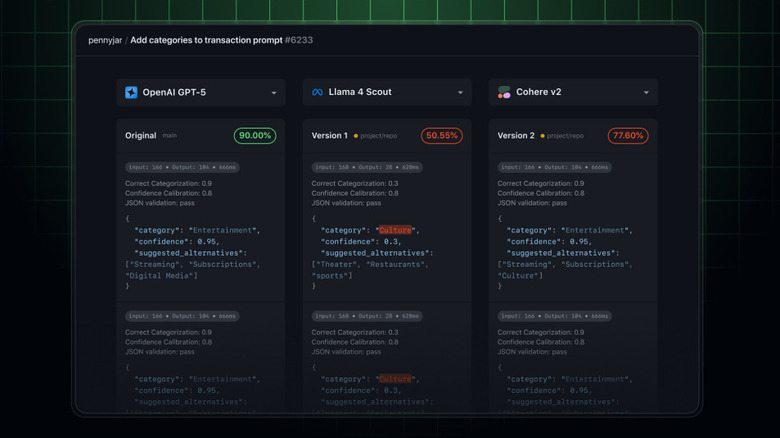OpenAI Reveals New GPT-5 Models
OpenAI has finally debuted the latest additions to its lineup of large language models (LLMs): GPT-5. The newest entries in the lineup include four different versions of the model, all of which are designed with different tasks in mind. The new models leaked ahead of time thanks to a blog post, but now OpenAI has officially revealed the models and highlighted what users can expect from them. While we don't expect the new models to be as groundbreaking of a leap as we saw in previous releases, it is expected to at least unify the experience a bit more by letting each model focus on what it does best.
As we noted above, OpenAI has released three different variations of its highly anticipated GPT-5 release in the API. Those models include gpt-5, gpt-5-mini, and gpt-5-nano. Depending on what you need the AI to accomplish, you can decide how much power you need.
OpenAI also says that GPT-5 will be able to handle more complex coding functionality than GPT-4.5 currently does, and with less prompting — which should be a nice change of pace for developers who rely on the AI for their coding work.
Upgrades and enhancements in GPT-5
One of OpenAI's priorities with the unified system that is GPT-5 was eliminating the need to choose the "best" model for the task at hand. While Sam Altman has talked about simplifying this process in the past, the fact that OpenAI will still offer multiple versions of GPT-5 means that users will still have some control over which model they want to us. That said, ChatGPT can also autonomously choose the model that works best for your prompt, and then feed the prompt to that model to generate a response.
More specifically, OpenAI refers to GPT-5 as a "real-time router," which means it can take into account "conversation type, complexity, tool needs, and your explicit intent" when deciding what you need from ChatGPT at any given time. The router learns as it works, which means it will improve as time goes on and it determines how successful its decisions have been.
Furthermore, OpenAI claims that GPT-5 is significantly better at coding, math, writing, and avoiding hallucinations. Having to double-check AI's claims is one of the biggest roadblocks for many users at the moment, but OpenAI says GPT‑5's responses are around 45% less likely to contain factual errors than GPT‑4o's responses.
Comparing GPT-5 to other models
By focusing the models on specific points of usage, though, OpenAI is setting GPT-5 up to respond better than we've seen from other new models in their early days. Despite the excitement around GPT-4o when it first released, for instance, there was concern from long-time users about how it felt like a step back for the AI's actual usability. Hopefully, that isn't the case with GPT-5, and these more fine-tuned models provide obvious performance gains that satisfy users.
A brief breakdown of how GPT-5 compares to other models like Llama 4 Scout and Cohere v2 was also released, which you can see above. Of course, real-world tests will provide a more accurate look at how the model performs. But, for now, we at least have some information to build off of.
As for availability, ChatGPT is now running the GPT-5 model for all 700 million people using ChatGPT weekly. The gpt-5, gpt-5-mini, and gpt-5-nano models are all available in the API, with costs ranging from $0.05 per 1 million input tokens to $1.25 per 1 million input tokens.

